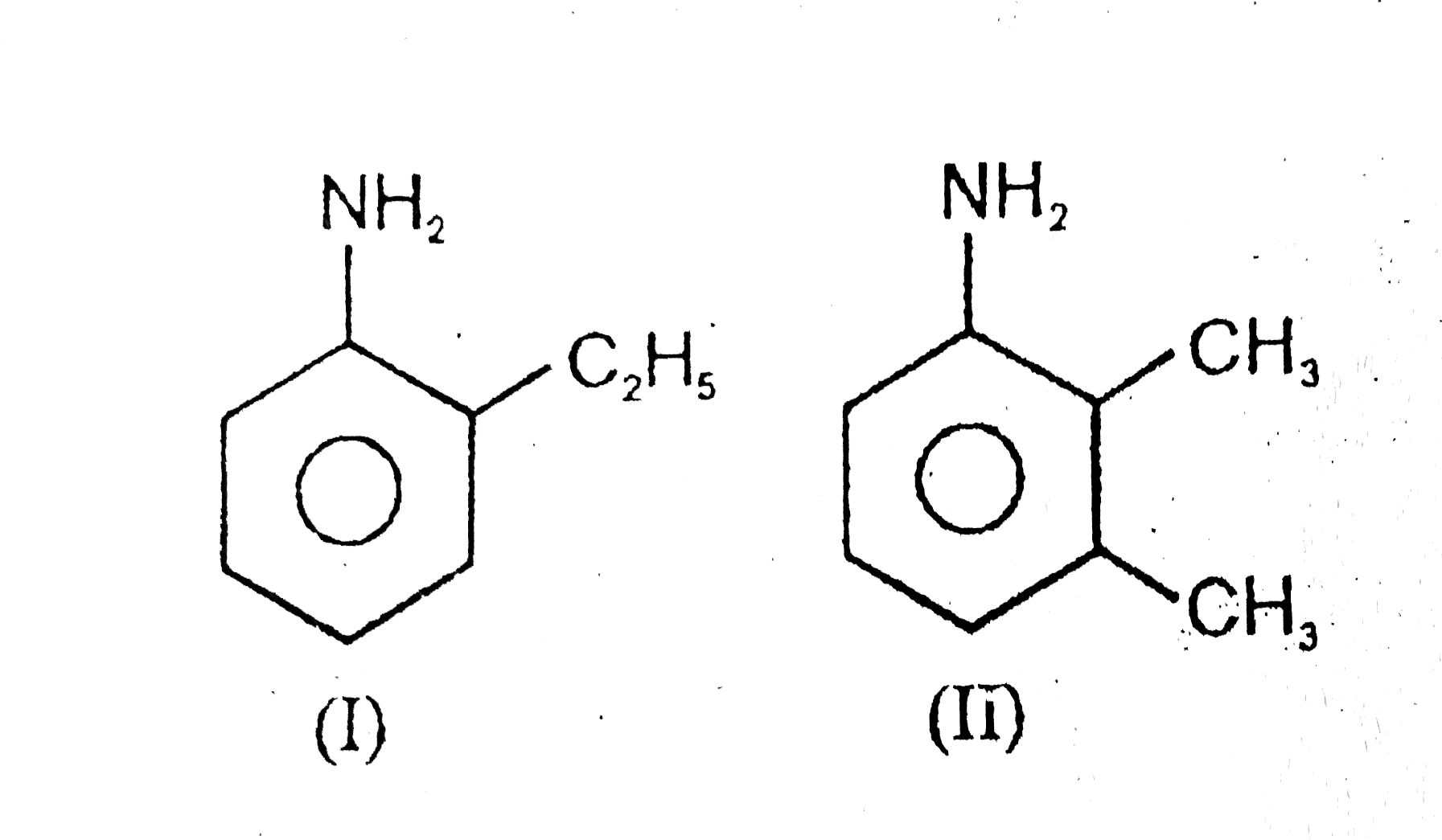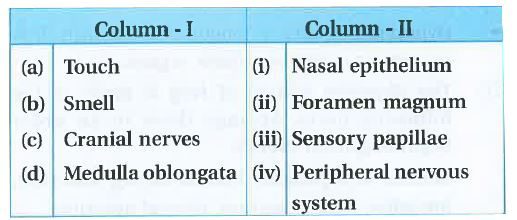
I) (A) and (B) are diastereomers II) (B) and (D) are enantiomers
III) (A) and (D) are geometric isomer IV) (A) and ( C ) are optical isomerSolution in Telugu
only I is true
I, II & III are true
I & II are true
all are true
The correct Answer is:D
(I) (A) and (B) are diastereomers
(II) (B) and (D) are enantiomers
(III) (A) and (D) are geometric isomer
(IV) (A) and ( C ) are optical isomer
Topper's Solved these Questions
- BOOK - AAKASH SERIESCHAPTER - ISOMERISM EXERCISE - PRACTICE SHEET EXERCISE-III (Stereo Isomerism) LEVEL-1I (ADVANCED) More than one correct answer Type Questions5videos
ISOMERISM
- BOOK - AAKASH SERIESCHAPTER - ISOMERISM EXERCISE - PRACTICE SHEET EXERCISE-III (Stereo Isomerism) LEVEL-1I (ADVANCED) Linked Comprehension Type Questions (Passage - I)3videos
ISOMERISM
- BOOK - AAKASH SERIESCHAPTER - ISOMERISM EXERCISE - PRACTICE SHEET EXERCISE-III (Stereo Isomerism) LEVEL-I (MAIN) Straight Objective Type Questions20videos
ISOMERISM
- BOOK - AAKASH SERIESCHAPTER - IONIC EQUILIBRIUM EXERCISE - ADDITIONAL PRACTICE EXERCISE (LEVEL -II PRACTICE SHEET (ADVANCED) (Integer Type Questions))8videos
IONIC EQUILIBRIUM
- BOOK - AAKASH SERIESCHAPTER - PERIODIC CLASSIFICATIONEXERCISE - OBJECTIVE EXERCISE - 3 (RECENT AIPMT/NEET QUESTIONS)14videos
PERIODIC CLASSIFICATION
Similar Questions
Which of the following is the diastereoisomer of
 04:53View Solution
04:53View SolutionThe necessary condition for a molecule to exhibit optical isomerism is dissymmetry or chiral. Thus all organic compounds which contain one assymetric carbon atom are chiral and exist in two stereoisomers. Although the two forms have the same structure, they have different arrangements of groups about the assymmetric carbon. In fact, they represent assymetric molecules. They do not have a plane of symmetry. They are related to each other as an object to its miror image and are non superimposable. The two structures actually stand for dextro or (+) and leavo or (-) isomers. Since they are related each other as mirror images, they are commonly called enantiomers.
Consider the following structers A,B,C,D

Which of the following statements is not correctConsider the following structers A,B,C,D

Which of the following statements is not correct05:08View SolutionIn the representation of specific rotation ([α]250CD), .D. indicates
01:36:46View SolutionA certain weak acid has Ka,=10−5. If the equilibrium constant for is its reaction with a strong base is repesented as y×10y then find the value of y.
05:19View SolutionWhich one of the following orders is not in accordance with the property stated against it?
04:55View SolutionGive the name and structrues of six C atom cyclic diene with lowest molecular mass that shows only geometrical isomers (diastereomers) and not optical isomers.
03:59View Solution

(A) I & II are chain isomers
(B) I & III are functional isomers
(C ) III & IV are metamers
(D) III & IV are functional isomers
Incorrect statement is :06:29View SolutionIsomerism| types of isomers|geometrical isomers|optical isomers
04:52View SolutionDetermine if the following pairs are identical, isomers, enantiomers, or diastereomers.
05:21View SolutionGiven structures are (A) resonating structures (B) tautomers (C) geometrical isomers (D) optical isomers
07:01View SolutionMatch the followings and choose the correct answer. (A) (a - ii), (b - iii), (c - iv), (d - i) (B) (a - iii), (b - ii), (c - iv), (d - i) (C) (a - i), (b - iii), (c - ii), (d - iv) (D) (a - ii), (b - iv), (c - iii), (d - i)
04:49View SolutionMatch the following with reference to cockroach and choose the correct option. (A) (a - iii), (b - iv), (c - ii), (d - i) (B) (a - iv), (b - iii), (c - ii), (d - i) (C) (a - iv), (b - ii), (c - iii), (d - i) (D) (a - ii), (b - iv), (c - iii), (d - i)
04:52View SolutionMatch the followings and choose the correct answer.

(A) (a - iii), (b - i), (c - ii), (d - iv)
(B) (a - ii), (b - i), (c - iv), (d - iii)
(C) (a - iii), (b - iv), (c - ii), (d - i)
(D) (a - iii), (b - i), (c - iv), (d - ii)01:37View SolutionMatch the following column .
Column -I Column-II (a) Molecular oxygen (i) α− ketoglutaric acid (b) Electron acceptor (ii) Hydrogen acceptor (c) Pyruvate dehydrogenase (iii) Cytochrome -C (d) Decarboxylation (iv) Acetyl Co-A
(A) (a-ii),(b-iii),(c-iv),(d-i)
(B) (a-iii),(b-iv),(c-ii),(d-i)
(C) (a-ii),(b-i),(c-iii),(d-iv)
(D) (a-iv),(b-iii),(c-i),(d-ii)02:41View SolutionMatch the two columns: (A) (I-A),(II- B), (III- D), (IV- C) (B) (I-B), (II-A), (III-D), (IV - C) (C) (I- A), (II-B), (III-C), (IV- D) (D) (I- D), (II- A), (III-C), (IV-B)
05:47View Solution

